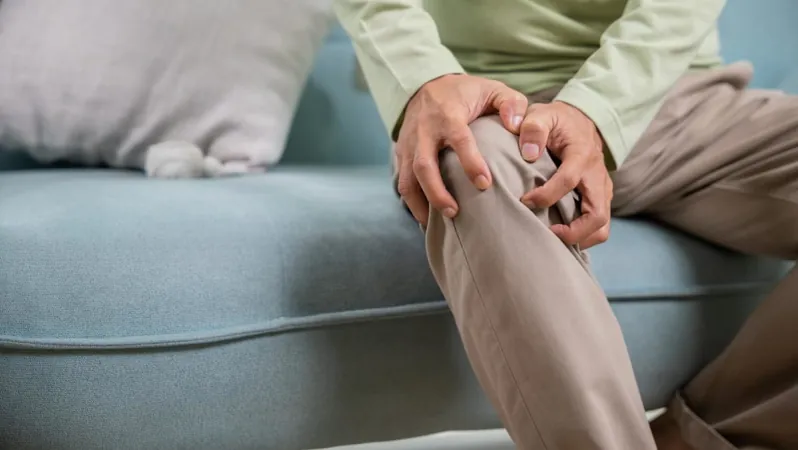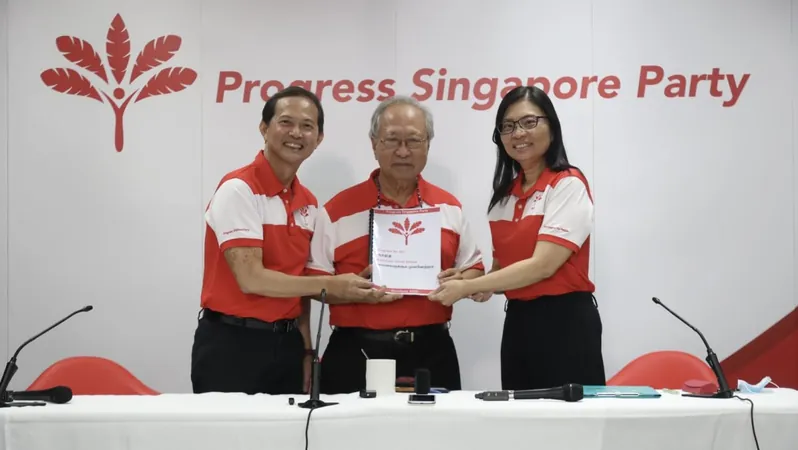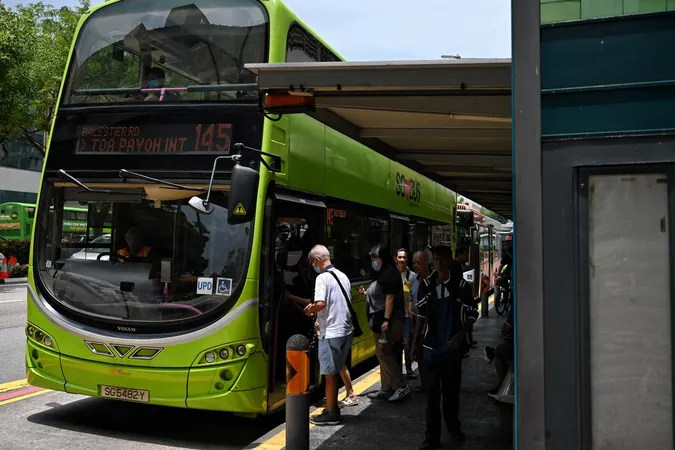
Singaporeans Flock to Malaysia for Revolutionary Stem Cell Knee Therapy – Is It Safe?
2025-01-12
Author: Nur
SINGAPORE:
In an urgent quest for relief from chronic knee pain, many Singaporeans like 58-year-old Johnny Lam are crossing the border to Malaysia for a controversial stem cell therapy, a treatment not yet authorized in Singapore for cartilage repair.
Last year, medical scans revealed severe damage to Lam's knee cartilage, exacerbating his long-standing struggles with pain and swelling. Unable to accept the doctor’s advice of eventually undergoing total knee replacements—an option typically lasting only 15 to 20 years—he began seeking alternatives to reclaim his active lifestyle.
Cartilage, the essential shock-absorbing cushion between bones in joints, can deteriorate over time, leading to debilitating pain when bones rub together. Frustrated and anxious about the future, Lam turned to a Malaysian clinic in Selangor offering stem cell therapy. The clinic, International Cancer Therapy & Stem Cells Technology (ICT & SCT), claims to collaborate with certified laboratories and doctors, providing stem cell treatment to both local and international patients.
“I had my doubts initially about the credibility of the clinic and the treatment quality,” recounted Lam. “But after extensive research and inquiries, I decided to give it a shot.”
In July 2022, Lam made the journey to Kuala Lumpur, where he received stem cell injections derived from donated umbilical cord tissue. After a challenging recovery phase—including swelling and pain that lasted several days—he eventually noticed significant improvements. By November, after a second round of injections targeting his right knee, he reported feeling pain-free and returned to activities previously thought impossible: dancing, running, and jumping.
The cost? A hefty RM30,000 (approximately USD 6,700).
Lam's case is far from unique. With stem cell therapies not accepted as standard clinical practices in Singapore for knee cartilage repair, more patients are finding their way to Malaysian clinics. Private facilities like the Kuala Lumpur Sports Medicine Centre (KLSMC) have performed over 1,000 such procedures since opening in 2007. Dr. Saw Khay Yong, an orthopaedic surgeon at KLSMC, notes, “Singaporeans usually have access to excellent medical services, so they turn to us primarily when they feel they have no other options.”
In the past year, interest from Singaporeans in stem cell therapy has surged, as reported by ICT & SCT’s Dr. Lim. Patients from across the island have been exploring this alternative route, expressed through firsthand experiences of relief and recovery.
For instance, Tong Peng Cheong, a 73-year-old patient, also underwent stem cell treatment for both knees at KLSMC and shared his success story. “Pain subsided significantly after the therapy,” he stated. Meanwhile, another patient known as Mr. Lee regained the ability to walk without discomfort after his procedure in 2014.
While success stories abound, the Ministry of Health (MOH) in Singapore remains cautious. Currently, the use of stem cells for cartilage repair is restricted to research settings due to a lack of consistent evidence supporting its efficacy as a mainstream treatment. A study from the National University Hospital (NUH) found an 80% success rate in a cohort of 440 knees over two years; however, stem cells harvested from the patient’s body were used in this case, further complicating the narrative around reliability and safety when sourced from external providers.
The price tag for Malaysian stem cell therapy can vary significantly—costs can range between RM30,000 to RM120,000, heavily influenced by the patient's individual circumstances and required treatment complexity.
Prof. James Hui, who leads a research initiative at NUH, emphasized that while breakthroughs are being explored, the MOH has mandated strict conditions to ensure safety and effectiveness. Their findings, pointedly guarded, invite individuals to weigh their options carefully before seeking treatments that are beyond the reach of regulatory approval back home.
As more Singaporeans gamble on stem cell therapy across the border, the discussion around safety and efficacy continues. Will this trend lead to a more comprehensive acceptance of alternative treatments in Singapore, or will it remain a desperate gamble for pain relief? The stakes are undeniably high.



 Brasil (PT)
Brasil (PT)
 Canada (EN)
Canada (EN)
 Chile (ES)
Chile (ES)
 Česko (CS)
Česko (CS)
 대한민국 (KO)
대한민국 (KO)
 España (ES)
España (ES)
 France (FR)
France (FR)
 Hong Kong (EN)
Hong Kong (EN)
 Italia (IT)
Italia (IT)
 日本 (JA)
日本 (JA)
 Magyarország (HU)
Magyarország (HU)
 Norge (NO)
Norge (NO)
 Polska (PL)
Polska (PL)
 Schweiz (DE)
Schweiz (DE)
 Singapore (EN)
Singapore (EN)
 Sverige (SV)
Sverige (SV)
 Suomi (FI)
Suomi (FI)
 Türkiye (TR)
Türkiye (TR)
 الإمارات العربية المتحدة (AR)
الإمارات العربية المتحدة (AR)